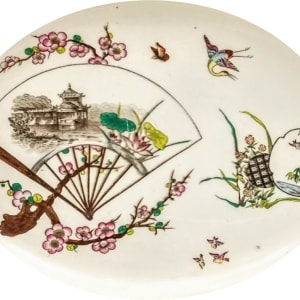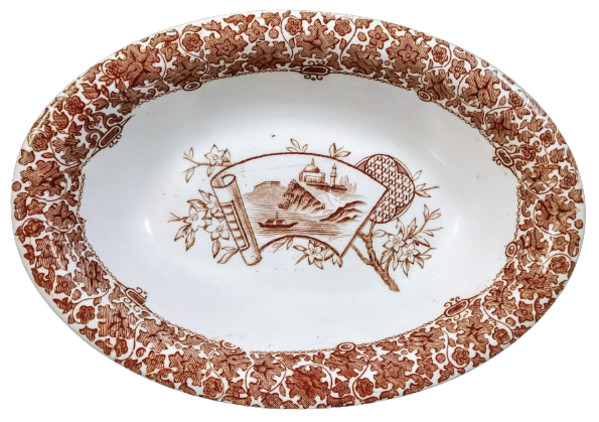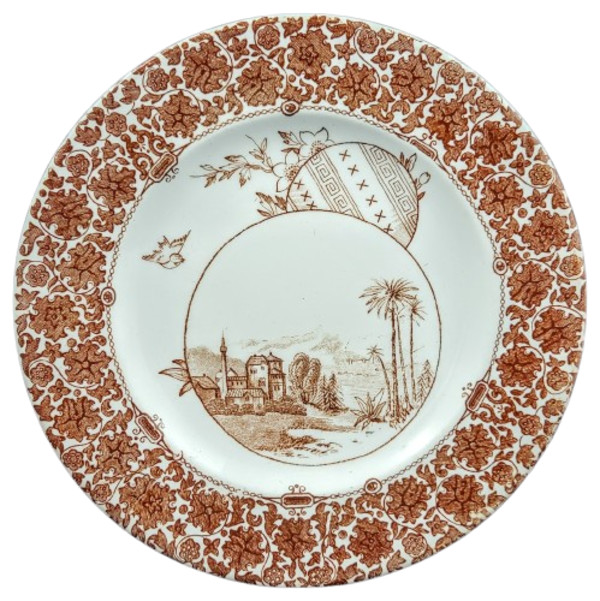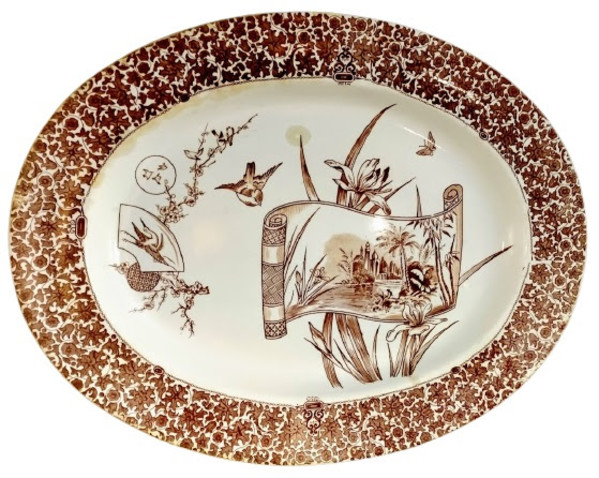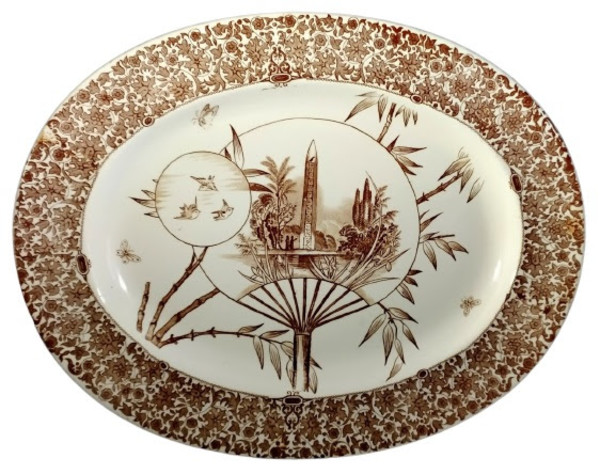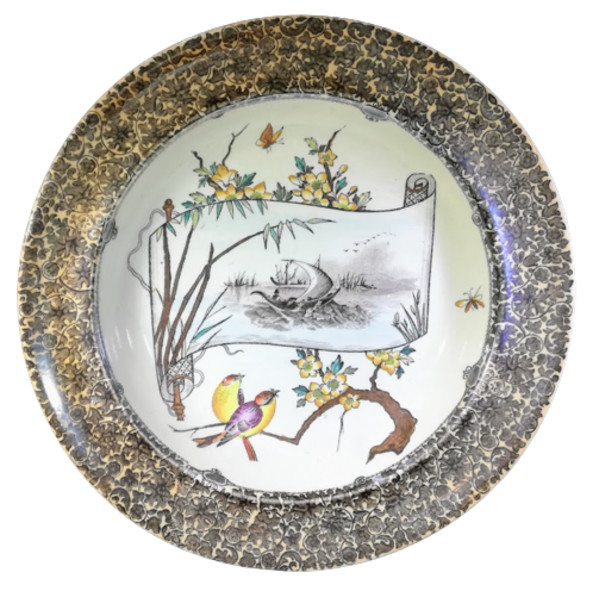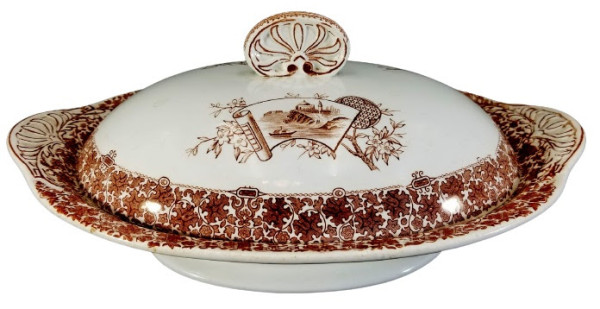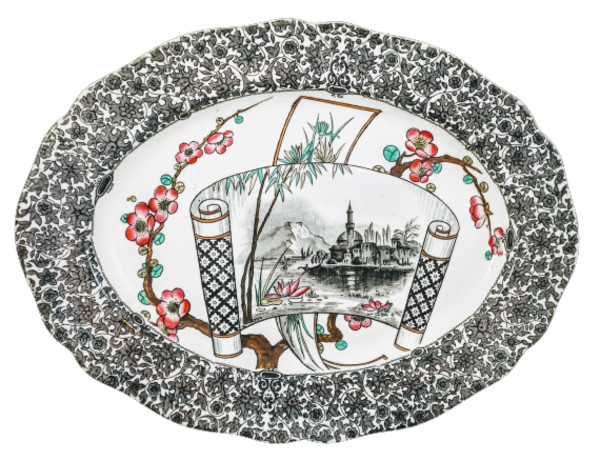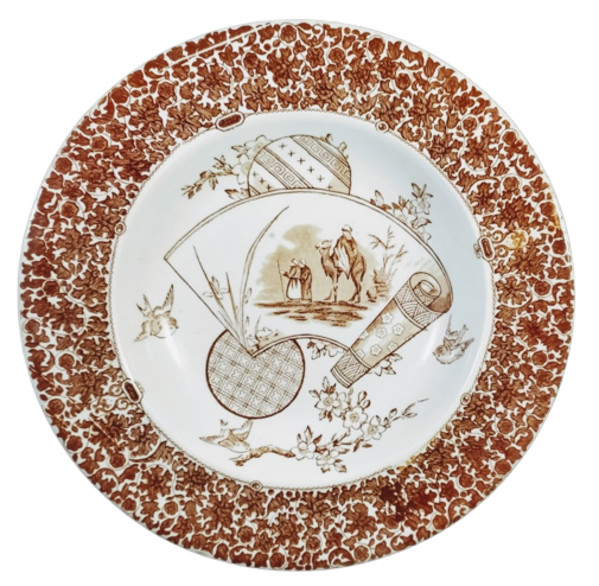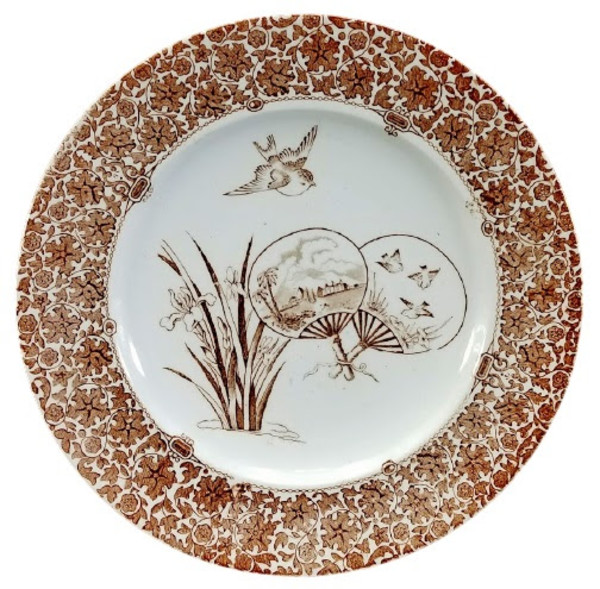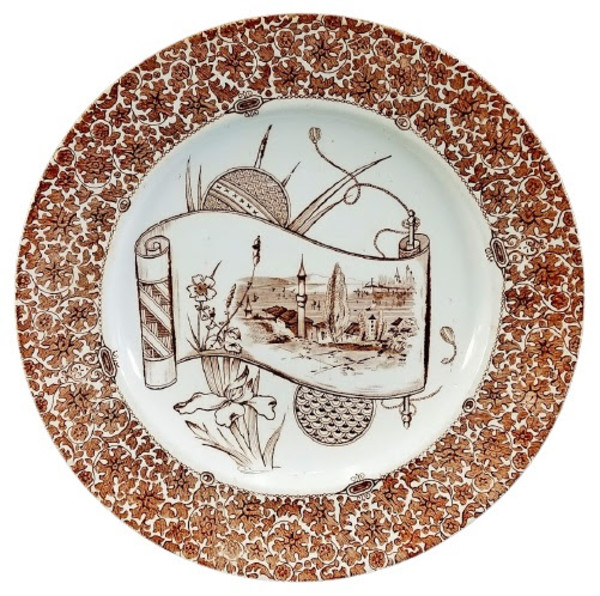- W. T. Copeland & Sons
- Cairo, 1881
- Earthenware
- 19 x 15 in (48.26 x 38.1 cm)
-
Not For Sale
Platter, 19 x 15 inches (48.3x38cm). Brown transfer with polychrome clobbering. Printed maker's mark for W. T. Copeland & Sons, identified in Copeland1993, Pg. 71 as the mark used between 1882 and 1894, especially for earthenware exported to the United States. The painted pattern number "2/1817" indicates a date of 1880. Part of the "Cairo" series, this pattern features the Copeland "Arabesque" border and Japanesque motifs in the center. The largest motif consists of a Japanese folding fan with a scene composed of a pagoda and waterlilies and pads. The fan is superimposed over a blooming prunus branch. To the right is a quatrefoil cartouche with bamboo stalks and water with a songbird in flight and a circular cartouche filled with a geometric pattern. Both smaller cartouches are laid over a patch of wildflowers and grasses. At the top of the platter a crane in flight appears and at the bottom are three songbirds in flight.
W. T. Copeland was the only son of William Copeland, partner of Josiah Spode in the Stoke Potteries, of Staffordshire and of Portugal Street, London. He succeeded his father as head of the porcelain firm in Portugal Street, London and eventually bought out the interests of the Spode family in the business in the Potteries and London. He ran the business in partnership with Thomas Garrett between 1833 and 1847. After the dissolution of the Copeland and Garrett partnership, it traded as W.T. Copeland and Sons. (1847-1976). In 1866 Copeland was appointed china and glass manufacturer to the Prince of Wales.
- Subject Matter: Aesthetic (Cartouche)
- Collections: Aesthetic Transferware, W. T. Copeland & Sons







